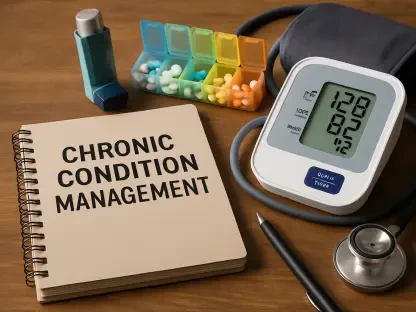Imagine a scenario where the United States could save billions of dollars in health care expenses simply by making more informed decisions about technology. A recent study led by Hilal Atasoy, an associate professor at Rutgers Business School, and her colleagues, published in MIS Quarterly, uncovers a striking opportunity: smarter choices in software, particularly with electronic health record (EHR) systems, could significantly reduce the financial strain caused by denied insurance claims. This issue, a major driver of escalating medical costs, burdens hospitals, patients, and taxpayers alike. The research highlights how strategic technology adoption might offer a practical solution to a problem that has long plagued the health care system. By addressing inefficiencies at their root, there’s potential to transform how financial resources are managed in this critical sector. This discussion will explore the depth of the challenge, the role of EHR systems, and the actionable steps that could lead to substantial savings.
Unpacking the Financial Burden of Denied Claims
The challenge of denied insurance claims represents a staggering financial hurdle for the US health care system, with profound implications for all stakeholders. When insurance providers reject payment for services—often due to errors in documentation, uncovered treatments, or procedural discrepancies—the resulting unpaid bills create a ripple effect. Over the span of two decades, an estimated $745 billion in medical care went uncompensated, with claim denials playing a central role in this loss. Hospitals and clinics bear the immediate brunt, often absorbing these costs or passing them on through higher fees. Patients, in turn, face unexpected out-of-pocket expenses, sometimes in the form of surprise billing, which can lead to financial distress. Beyond individual impacts, taxpayers shoulder the burden as systemic inefficiencies inflate overall health care spending. Addressing this pervasive issue is not just a matter of fairness but a critical step toward stabilizing an industry under constant economic pressure.
Digging deeper into the consequences, denied claims reveal a structural flaw that undermines the efficiency of health care delivery. The administrative burden of resubmitting claims or appealing denials consumes valuable time and resources, diverting attention from patient care. For smaller providers, the financial hit can be particularly devastating, sometimes threatening their ability to operate. Meanwhile, the psychological toll on patients cannot be ignored, as unexpected medical bills contribute to stress and distrust in the system. The scale of this problem underscores the urgency of finding solutions that go beyond temporary fixes. By targeting the root causes of denials, such as data inaccuracies and procedural errors, the health care sector could reclaim significant funds that are currently lost to inefficiency. This financial recovery would not only benefit providers but also pave the way for more equitable access to care, reducing the economic strain felt across society.
EHR Systems: A Double-Edged Sword in Cost Management
Since the introduction of the 2009 Health Information Technology for Economic and Clinical Health (HITECH) Act, EHR systems have been heralded as a cornerstone of modernizing health care, yet they’ve also contributed to unexpected challenges. The legislation aimed to streamline operations by encouraging the adoption of digital records, promising improved patient outcomes and cost efficiencies. However, the reality has been far more complex. The proliferation of EHR platforms from various vendors has created a fragmented landscape where systems often fail to communicate effectively with one another. This lack of interoperability frequently results in patient data being incomplete, misinterpreted, or lost entirely during transfers between facilities. Such discrepancies directly increase the likelihood of errors in insurance claims, leading to denials that inflate costs for providers and patients alike. What was intended as a solution has, in many cases, become a barrier to financial stability in the sector.
Further complicating the issue, the use of multiple EHR systems within and across health care facilities exacerbates inefficiencies in claim processing. When hospitals and clinics rely on disparate platforms, staff must navigate varying interfaces and protocols, heightening the risk of mistakes in data entry or submission. Atasoy’s research, which analyzed over 19 million patient visits across Maryland hospitals, provides concrete evidence of this problem. Facilities juggling multiple vendor systems consistently reported higher denial rates compared to those with a unified approach. This technological mismatch not only slows down administrative processes but also places an undue burden on health care workers who must adapt to inconsistent tools. The resulting errors contribute to a cycle of financial waste that undermines the very goals of digitization. Addressing this fragmentation is essential to harnessing the full potential of EHR systems as a means of cost reduction rather than a source of added expense.
Strategic Software Solutions for Financial Relief
Amid the challenges posed by EHR systems, the research offers a beacon of hope: strategic software choices can directly lower denial rates and yield significant savings. Hospitals that commit to using a single vendor for their EHR platforms experience notably fewer claim rejections compared to those managing multiple systems. This consistency reduces errors by providing a uniform framework for data entry and submission, streamlining the entire process. Even a modest decrease in denial rates—from 1.18% to 1.03%, as highlighted in the study—can translate into millions of dollars saved annually, given the enormous volume of claims processed each year. Such findings emphasize that standardization in technology is not merely a convenience but a powerful tool for financial recovery. By minimizing variability, health care providers can focus resources on patient care rather than administrative corrections.
Another critical factor in reducing denials lies in the familiarity of physicians with specific EHR systems, which can dramatically improve outcomes. When doctors work across facilities that utilize the same software, their proficiency in navigating the platform enhances the accuracy of data input and compliance with insurance requirements. This consistency cuts down on mistakes that often lead to rejected claims, as practitioners become adept at meeting payer guidelines. The study underscores that investing in training and ensuring uniform system exposure for medical staff is just as important as the technology itself. Hospitals that prioritize this alignment not only see lower denial rates but also foster a more efficient workflow, allowing clinicians to dedicate more time to patient needs. This dual benefit of cost savings and improved operational focus illustrates how targeted software strategies can address systemic inefficiencies at their core, offering a practical path forward.
Policy Reforms to Support Technological Efficiency
Looking beyond individual hospital practices, the research points to the need for broader policy interventions to maximize the cost-saving potential of EHR systems. Federal initiatives to standardize certification processes and user interfaces for these platforms could eliminate much of the variation that currently exists among vendors. By establishing uniform standards, data flow between systems would improve, significantly reducing the errors that lead to claim denials. This approach would create a more cohesive technological ecosystem, enabling seamless communication across health care networks. Such reforms are not just about fixing technical glitches; they represent a fundamental shift in how technology is integrated into the health care framework. Policymakers have a unique opportunity to drive change that could alleviate financial pressures while enhancing the quality of service delivery across the board.
Additionally, policy efforts must consider the role of ongoing support and training to ensure that standardized systems are used effectively. Without proper guidance, even the most advanced EHR platforms can fall short of their potential if staff are unprepared to leverage them. Government and industry collaboration could facilitate the development of comprehensive training programs and certification criteria that prioritize user proficiency. This would help bridge the gap between technological capability and practical application, ensuring that the benefits of standardization translate into real-world savings. Moreover, incentivizing hospitals to adopt unified systems through funding or regulatory measures could accelerate the transition to a more efficient model. By addressing both the technical and human elements of EHR implementation, these reforms could reshape the financial landscape of health care, turning a persistent challenge into an opportunity for sustainable improvement.
Building a Future of Cost-Effective Health Care
Reflecting on the insights from Hilal Atasoy’s study, it’s evident that smarter software choices hold immense promise for curbing US health care costs in the years following the research. The focus on tackling denied insurance claims through enhanced EHR interoperability and standardization proves to be a pivotal strategy, offering tangible savings for providers and patients alike. Hospitals that adopted unified systems and prioritized physician training saw meaningful reductions in financial waste, setting a precedent for others to follow. The push for federal policy reforms to streamline certification and usability of digital platforms also gained traction, laying the groundwork for systemic change. Moving forward, stakeholders must continue to invest in technology that bridges gaps rather than creates them, while advocating for policies that support long-term efficiency. By committing to these actionable steps, the health care industry can build on past lessons to ensure a more financially sustainable future for all involved.









